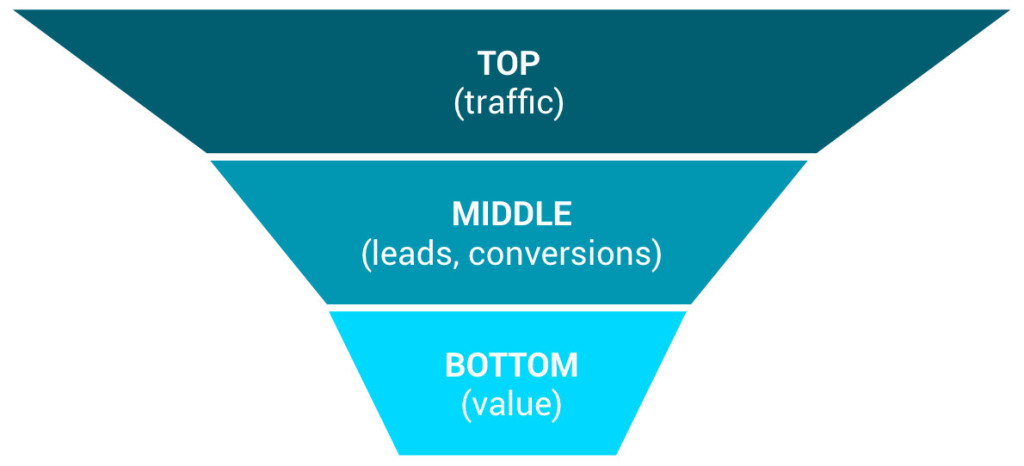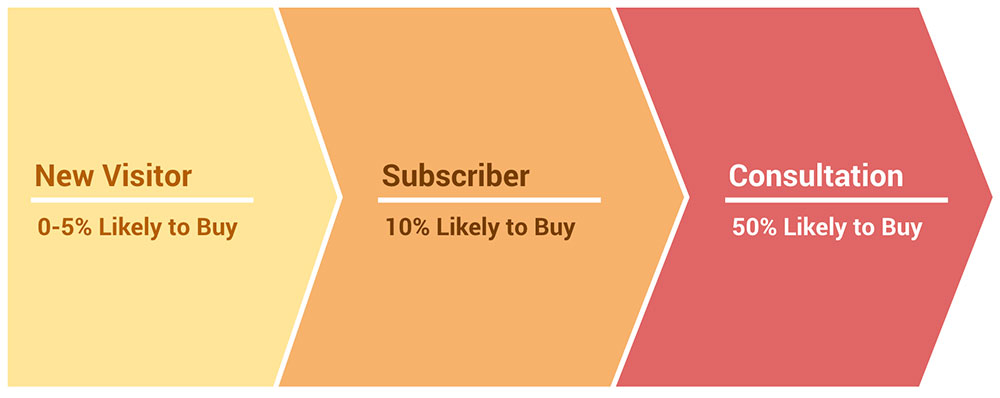Working On Your Sales Funnel
Get. More. Sales.
I’m digging into my first goal of the year, which I’m calling _operation sales funnel. _So I’ve been giving this plenty of thought lately. Here’s a thing or two I’ve figured out about this murky gray cloud that is “the sales funnel”.
Everybody wants to increase sales. Maybe you’re looking for that very first paying customer. Or maybe you’re scratching and clawing your way up and over the $5k/month hump. Or you’re looking to scale up and go big.
No matter which phase you’re in, this question never really leaves your mind:
“How to get more sales?”
But depending on which phase your business is in, this question has a bit of a different ring to it.

The early days
In the early days, the question you’re asking is, “How do I get my first sale(s)?”
This is really a question of validation. Is the value proposition you’re offering valid? Are people willing to pay for it?
Typically, you’ll have to go through many iterations and conversations with customers before you’ve reached that key milestone: Your first paying customers.
Once this happens, congratulations. You can proceed to the next phase…
The slow build
In the middle-phase, or what most of us refer to as the long, slow SaaS ramp of death, the question becomes, “How do I get more sales?”
This is the phase I’m in now, have been for a while, and don’t see a clear end in sight. I think that’s normal. At least that’s what I’m telling myself.
The key to finally breaking out of this phase is to amend that question with one word:
“How do I get more sales—predictably?”
Predictable revenue. Figuring out the magic concoction of strategies that will allow you to confidently say, “If I put one dollar in, I’ll get 2 dollars back, every month.”
Going big
To be honest, I can’t speak much to this next phase, because I’ve never been there.
But from what I can gather, once you’ve established the sales engine and revved it up a few times, the question shifts to, “How do I boost profit and growth?”
Or so I’d imagine. We’ll figure that part out another day.
Getting to work…
When you set out to work on improving your sales funnel, as I did at the start of this year, what’s the first step?
That would be figuring out where in your sales funnel—The top, middle, or bottom— to focus your attention and efforts.

- Top of the funnel: Your traffic source(s) and the way in which those visitors convert to leads.
- Middle of the funnel: The mechanism for converting leads into paying customers.
- Bottom of the funnel: The value of your product—the reason people pay for your product, use it, and recommend it.
It would seem obvious to tackle the levels of your sales funnel in order, from top to bottom, starting with getting traffic. But this isn’t quite right.
I think the area of focus depends on which phase your business is in. So with that in mind, I recommend working on your sales funnel in this order:
- Bottom
- Top
- Middle
First, The Bottom (Value)
In the early days, it’s all about nailing down your value proposition. Without solidifying the why behind your product, nothing else can work.
You won’t get customer number one, two and three until you understand why they want your product, and how they intend to get value from it.
(Note: This is probably different from why you believe they need your product).
Next, The Top (Traffic)
Once you’ve landed your first customers, and you’ve learned who they are, and their why, your next task is to find more of them. Now it makes sense to focus on traffic.
Your task here is to find the right sources of traffic that will expose the right type of people to your product.
When it comes to traffic, it’s about quality, not quantity.
Middle of the Funnel
Finally, we come to what I believe is the most important level in your sales funnel: The critical middle step.
This is the action that a person takes just before they’re ready to buy. When they take this critical step, they’ve accelerated into the make-or-break moment. Will they become your next paying customer?
Everything hinges on this middle step. But the middle step is different for every business. It’s up to you to find out what it is for yours.
That can take a long time to figure out (they don’t call it the long slow ramp of death for nothin). But uncovering it will be the key that gets your sales funnel working.
What are you looking for?
So how will you know when you’ve found the critical middle step in your funnel?
Conversion rate.
You’re looking for the point in a visitor’s journey where the likelihood that they will become a customer increases from the 0-5% range to a range of 25-75% (or better).

For example, let’s say, 1000 people hit your site in a month. You land 10 new paying customers. That’s a 1% conversion of visitors to paying customers. Clearly, “viewing your homepage” is not the critical-middle step in your sales funnel.
So let’s dig deeper.
100 opted-in for your email list. If 10 of them became paying customers, the conversion rate of email subscribers to paying customers is 10%. We’re getting there, but we can’t quite say that opting-in for your email list is that critical middle step.
You had phone conversations with 20 of those new email subscribers, 10 of whom became paying customers. A 50% conversion rate. That’s it!
You’ve just learned that when you get your visitors on the phone with you, there is a high likelihood they will become a customer.
Optimizing for phone consultations
Now does this mean you can start cold-calling anyone and everyone and expect to have a 50% closing rate? Of course not.
Your 50% conversion rate happens only after the person moved through the earlier steps in your funnel (arrived at your site, joined your email list, learned about you and your offering, built trust, and requested a phone call).
But since you’ve learned that the critical middle-step in your funnel is that phone consultation, you can optimize all of the other steps to lead to this.
Ways to optimize for this:
- Show your pricing publicly so that those who request a consultation are pre-qualified.
- Make your primary call-to-action consistently point to your consultation form.
- If you have a high-volume of traffic and leads, you can integrate a CRM and followup system. I detailed and documented our Trello CRM and followup system here.
- Prompt your email subscribers with an offer to request a free consultation.
More Examples
Here’s another common scenario:
Activating a Free Trial
-
Who this applies to:
Software as a Service -
Critical middle step in the funnel:
Activating/getting value from the service during the free trial
SaaS apps that offer a free trial typically have a low conversion rate of free signups to paying customers—even when the credit card is required up-front.
But the conversion rate of users who sign up for the free trial and then activate their service is often significantly higher.
A trial user has “activated” the service when they’ve actively begun using the product and getting some value from it. What that actually entails is different for every app.
For example, in an analytics tool, it might mean the customer installs the necessary tracking code on their website so they can begin seeing data. In an accounting tool, it could mean the user connects their bank account to begin tracking expenses. In a video hosting service, activating could mean the user uploads their first video.
Users who only sign up for their trial account, but don’t take the next step to activate and use the service, have likely disappeared and won’t buy. But those who do install the tracking code, connect their bank account, upload their project, etc. are much more likely to see the value and eventually convert to a paid account.
Ways to optimize for activating a free trial:
- Personally call or email new users who’ve signed up to help them get started.
- Set up an onboarding sequence of emails with tutorials for getting started.
- Populate dummy data in the app to show users what the service could look like once it has their real data.
Learn, simplify & improve
I used to hate looking at analytics, numbers, and data. As much as I always wanted to be data-driven about my business, that just never came naturally to me. I’ve always been much more focused on the user experience, and the value to a customer.
But once I began breaking down the user’s journey from cold visitor, to lead, to prospect, to customer, I was able to find the one key step that made a difference.
That’s what working on your sales funnel is all about.
